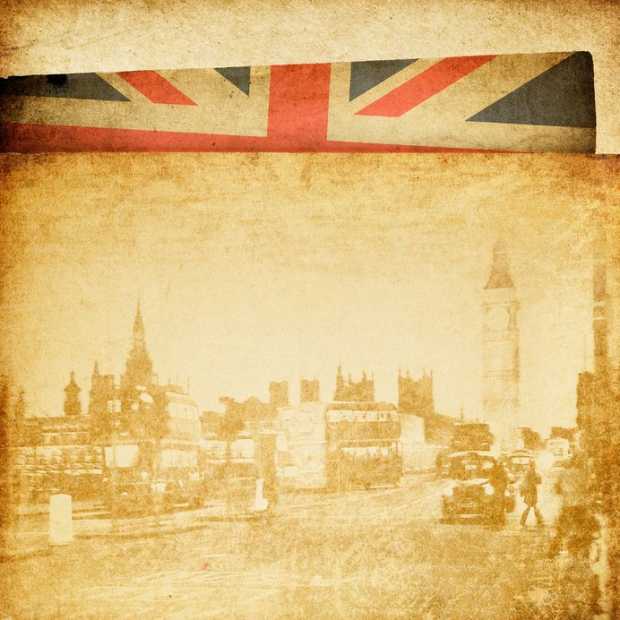Not a member yet? Sign Up!
Info
Please use real email address to activate your registration

H. G. Wells (1866-1946), the father of science fiction and author of The Island of Dr. Moreau, The War of the Worlds, and The Time Machine penned his view on London:
“London... Takes a lot of understanding. It’s a great place. Immense. The richest town in the world, the biggest port, the greatest manufacturing town, the imperial city-the center of civilization, the heart of the world.”

There are many reasons to visit London. As the city’s current official guide describes, there are top museums and galleries, west end theaters, iconic skyline, premiere shopping destination, beautiful green spaces, and top sports.
Nevertheless, trying to understand London, through the eyes of H. G. Wells is to go back on history page, to the years 1851-1951.
Since centuries ago Britain had been established as an immensely powerful and prosperous nation. With numerous colonies, it had become a political unit possessing a power that was utilized to rule its extensive territories. This qualifies the nation’s position of being an empire.
Architectural Works
The imperial capital of the British Empire is none other than the City of London. Due to the constitution of “a large city or urbanized area, including adjacent suburbs and towns,” vast international network connections and its monarchial reign, London also obtained its status as an imperial metropolitan city.

Back then, Londoners think of their city, as the center of the nation’s immense supremacy. Contributing to this view were the architectural works such as the Buckingham palace, Trafalgar square, the Ceremonial core of Westminster, and the Houses of Parliament. These monumental architectural works illustrated the nation’s imperial powers and hence constructing London as the empire’s capital.
Parks and Gardens

London’s status was not only obvious in the form of monumental architectures, but also in the form of parks and gardens around its suburbs. As it was suggested, these leisure areas created a notion of London being a peaceful place where all the colonies can peacefully amalgamate, and “a real home for the children of the empire.”
The city was very well known worldwide for its pre-eminence of being the greatest commercial and financial center. Its unique financial role has become critical to the empire’s economic development through imperialism of free trade. There are several places where this can be visible to the general public during the old days. The most obvious is the area around Strand. Since the early 20th century, many colonial companies and diplomatic offices occupied this area.
Exposition of Knowledge

One of the most successful ways in which London has established its important status is through the exposition of knowledge. This was particularly done through the creation of exhibitions and museum lands, which included: the Natural History Museum, Imperial Institute, Victoria and Albert Museum and the Royal Geographical Society. The imperial power is essentially shown through knowledge. Mostly located in the South Kensington area, it all began with the opening of the great exhibition by Queen Victoria in 1851.
Since earlier on, department stores have displayed the nations power by selling goods derived from all over the empire. Britain fundamentally tried to reassert its aggressive imperial self-image by positioning itself at the center of a world of trade and consumption.
Shopping Streets
William Whitely, the founder of London’s first modern department store in 1863, famously styled himself as ‘the universal provider.’ Along with selling various of exotic goods, some stores invested performances and displays with a range of cultural meanings.
The larger department stores were seen to include live tableaux of Hindu temples, Cairo markets, Turkish harems, and many other magnificent displays. Lower end stores such Lipton’s and other stores in Nottinghill were also overflowed with stores of tea, coffee, silk, tobacco and other foreign and colonial products.

Displaying the city’s imperial powers, the larger shopping streets of the west ends were often on the routes for coronations and other state occasions. For instance, in the coronation of George VI in 1937, Selfridges transformed itself into a giant imperial monument complete with symbolic figures, representing the different colonies and dominions.
Essentially, London as the empire’s capital and imperial metropolis of the world are visible in many different ways, sometimes clearly projected and at times less visible.
"There is a tendency to utilize underground space for the less ornamental purposes of civilization; there is the Metropolitan Railway in London, for instance, there are new electric railways, there are subways, there are underground workrooms & restaurants, & they increase & multiply." H. G. Wells.
-------------------------------------
Images: Pashabo, Karel Miragaya, Zsolt Biczo/123rf; Selfridges